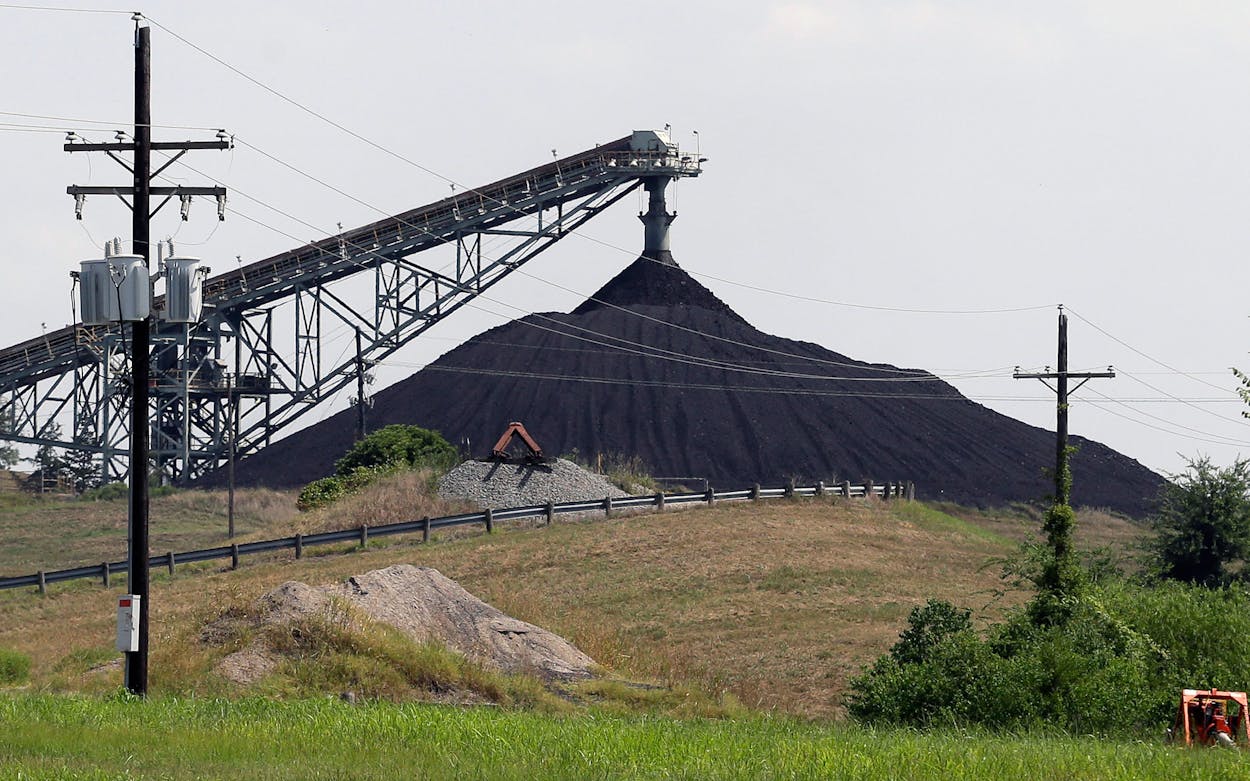Editor’s note: this is a contributed op-ed.
The state’s biggest electricity generator, Luminant, recently announced the closing of three coal-fired power plants in Texas, but out of the coal ashes could rise a phoenix.
The blighted land around these power plants presents a unique opportunity for clean energy investment, specifically utility-scale solar.
For forty years, these “mine mouth” power plants, those that generate power from coal mined on site, have used the vast and shallow belts of lignite coal that underlay sections of eastern Texas to provide reliable and cheap, but dirty, electricity. In their wake, they leave behind thousands of acres of contaminated land surrounding the plants, some of which has already been reclaimed.
And this land is particularly well suited for large solar farms.
Consider the following:
There is steady demand. Market forces including low wholesale electricity prices, cheap natural gas and increased renewable generation have made operating these three plants uneconomical. Even with population increases, overall electricity demand growth has slowed due to increased energy efficiency. That said, there is a broader trend toward electrification, notably through accelerated adoption of electric vehicles. In order to match this new demand with clean energy, we’ll need the type of creative investment in renewables that utility-scale solar offers.
The land is flat and clear. For the most part, the state-monitored, sludge-filled land on which the coal plants depended meets the ideal criteria for solar. The land has been flattened and re-vegetated with grass, but it has little potential for any future use without costly cleanup efforts. It is unencumbered by trees or other brush that often would need to be cleared to install a solar farm. In fact, solar is already being fitted on environmentally blighted places, from legacy mines to landfills, and technologies exist to do so with minimal impact to installers and maintenance workers.
And finally, the location is right. It’s true that the state’s highest solar potential is located in the West. However, the large cities of Dallas, Houston, Austin and San Antonio are located relatively close to the soon-to-be-shuttered facilities. This is important because the poles and wires to connect power plants to the population centers are extremely expensive, and more energy is lost the farther you transmit it. Consequently, transmitting energy over shorter distances saves money, which lowers energy bills for customers.
Building and permitting new transmission lines also frequently includes use of eminent domain to take private land, which, understandably, is often met with opposition. Conveniently, Luminant’s three plants reside in the heart of the state’s transmission grid, managed by the Electric Reliability Council of Texas (ERCOT), and the necessary substations for connection already exist on site. Building solar generation on these reclaimed sites not only avoids the cost of new transmission but also takes maximum advantage of public investment in grid infrastructure.
Reusing land for solar isn’t a new idea, but being able to reuse land for solar so close to costly transmission infrastructure is. Trading cheap and reliable, but dirty, coal for free sunshine isn’t a one-to-one swap. A solar farm doesn’t employ anything close to the 800 miners who will be laid off from these closures. However, this investment would be replacing power plants that run seasonally anyway and whose electricity output won’t be missed.
In the end, using this land for a solar farm optimizes the shuttered uneconomic coal plants, a trend that will only continue. Luminant, which has already acquired a solar farm in West Texas, could use this opportunity to work with developers to identify sites appropriate for solar as part of their current, and successful, reclamation efforts. State agencies, such as the Texas Commission on Environmental Quality (TCEQ), that permit and monitor these sites should help identify and remove any barriers to permitting solar on blighted land and assess options for industrial use. Leveraging our existing resources is a responsible step in the right direction as we undergo a truly giant transition toward 21st-century energy infrastructure.
Brooke Holleman is a graduate research assistant in the Energy Institute at The University of Texas at Austin.
- More About:
- Energy






